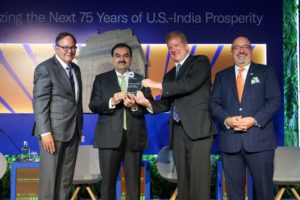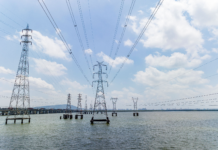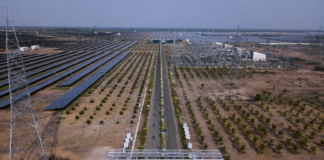Gautam Adani speech at the USIBC
The following is the Award Acceptance speech delivered by Gutam Adani at the USIBC on 7 September, 2022.
“Vice Chairman Nasdaq, Ed Knight Executive Vice President and Head of International affairs of US Chamber of Commerce, Myron Brilliant President of US India Business Council, Ambassador Atul Keshap and Distinguished Guests.
It is an honour to be a recipient of the USIBC Global Leadership Award. I am grateful to have the opportunity to speak in the presence of so many industry leaders and senior government officials. At a personal level, the fact that the award comes on the occasion of the 75th anniversary of India’s freedom makes it even more significant and memorable.
The theme of this summit – Maximizing the Next 75 Years of US-India Prosperity – is impeccable in terms of timing. There can be no disagreement that given the fast-evolving and new emerging global dynamics – the success of the partnership – between the two largest global democracies of India and the United States – will be one of the most defining relationships of this century. However, while there is strategic alignment – I am sure we would all agree that far more needs to be done in terms of ground execution.
A central element of this relationship will need to be the mutual acceptance – that free trade, openness, and integration into each other’s economies – are needed to set the foundation for the range of possibilities that remain unexploited. Common ground on geopolitical concerns is essential – but will mean little – unless they are built on the foundation of business relations. Without tangible business objectives, global cooperation will largely continue to be paralyzed. In this context, the role of the USIBC will be key – in linking the voice of the industry – with government policies. The need is immense, and the stakes are massive, given the current world order.
Let’s look at some macro numbers. If we fast forward to 2050, the combined value of the US and Indian GDP is expected to be a staggering 70 trillion dollars. It will make up 35-40% of the global economy. By 2050, the combined population of the two countries will be over 2 billion people – and about 20% of the global population. More importantly, the combined median age of our two nations will still be less than 40 years even in 2050. Contrast this with Europe and China – the median age in Europe is already 44, and in China, 40 years.
When seen through these lenses of economics and the raw power of consumption it is evident that the existing 150 billion dollars of bilateral trade between the US and India is no more than a speck in the ocean. Far more needs to be done.
Therefore, under these circumstances, what are the options before us and what role should the USIBC play?
To begin with – while negotiators from both our countries have struggled to reach a deal on a trade package and tariffs, I believe we are closer than ever before to address the open matters. I am confident we will resolve this and mutually accept some compromises. What we cannot afford – is to remain stuck in the belief – that all aspects of trade and relations are being hampered as a result of tariffs.
There are some strategic areas where we have to show joint progress.
The first and foremost – not surprisingly – is Climate Change. There has been a lot of talk about the developed nations supporting the developing nations but far more needs to be done – urgently – in terms of partnering in this space. Cooling the planet down – equitably – is necessary and can be one of the most profitable businesses over the next several decades. With the signing of the US climate bill into law, both our nations must find a mechanism to benefit from this massive stimulus. The governments have done their part, it’s now the job of the businesses to find a way to collaborate.
The Adani Group has already committed 70 billion dollars to this effort. This will see us building three giga factories in India leading to one of the world’s most integrated green-energy value chains. This will extend from polysilicon to solar modules, complete manufacturing of Wind Turbines, and the manufacturing of Hydrogen Electrolyzers. As a result, we will generate an additional 45 GW of renewable energy to add to our existing 20 GW capacity, as well as 3 million tons of Hydrogen – all of which will be completed before 2030. This value chain will be fully indigenous and aligned with the geopolitical needs of our nation. However, I believe we can further accelerate our goals with support from companies in the US that are willing to work with us. Both of us stand to benefit!
Next is in the area of semiconductors. We live in a world where semiconductors are essential to almost all sectors of the economy. The ongoing war has only accelerated this recognition. The paradox of capitalism is that India continues to be the best global pool for millions of engineers – especially for US companies – but the primary value addition to the businesses happens outside India. The semiconductor industry is a classic example with more engineers deployed in India than anywhere else in the world, and yet, India has no semiconductor plant. India cannot remain dependent on global supply chains that are based on semiconductor nationalism and will need US support with technology transfer.
Yet another area is healthcare. We saw the way national priorities took over during the Covid-19 pandemic and the availability of vaccines became a game of votes and capitalism. The term deglobalization gained prominence because of the divisions that came about as a result of the pandemic. We must never allow this to happen again, given the mistrust it creates. Vaccine collaboration between our nations must be high on our priority list and needs to be formalized in a mutually beneficial way.
Likewise, defence and cyber are two critical areas that the US and India must work on. Trust comes from collaboration in these areas. India needs support in both these areas and, at this time, we are just skimming the surface. These are two essential areas where our partnerships must span technology transfer to be able to build mutual confidence.
I would therefore urge the USIBC to facilitate a broader platform that brings together executives from similar industries on both sides on a regular basis. There are a lot of gains to divide with the size of the two economies beginning to converge as we approach 2050.
The outcome from these forums would be multiple. It would lay the foundation for a broader business development platform, continuously highlight the policy challenges that must be addressed, as well as get the businesses and policymakers on a common platform. There must be clear objectives laid out to which we make commitments. This is a missing piece today.
What I can personally commit to – is that we are here to support – to do our part to make this happen – and work with any of you to take this initiative forward.
I must also add here that the work done by Nisha Biswal, the ex-President of the USIBC, and now being done by Atul Keshap, the current President, has been nothing short of extraordinary. They have made the USIBC relevant and taken it to a level where it is now in a position to be one of the most crucial platforms between our countries to accelerate business relations. We must all be thankful for the initiatives they have driven and continue to drive in helping bring our nations together.
In closing, let me say that while I have highlighted several matters that we will need to address,
- My optimism that our two nations will find a solution has never been higher
- Our joint ability to impact the world has never been greater
- The need has never been larger.
Thank you







































COMMENTS